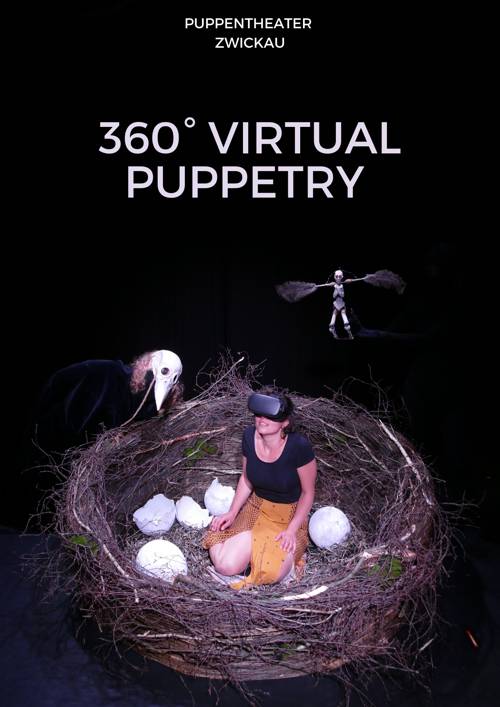
FAQ About The Role of Virtual Puppetry in Performance Arts

What is virtual puppetry in performance arts?
Virtual puppetry is an art form that combines traditional puppeteering with digital technology to create performances where digital avatars or puppets are manipulated in real-time. This allows puppeteers to merge the tactile art of puppetry with the limitless possibilities of computer-generated imagery (CGI), resulting in innovative and immersive storytelling experiences.

How is digital technology used in virtual puppetry?
Digital technology in virtual puppetry is used to animate and control digital characters or avatars. This can involve motion capture technology, where a puppeteer's movements are tracked and used to animate a character on screen. It may also utilize software that allows for the manipulation of 3D models in real-time, bringing virtual puppets to life in a dynamic way.

What are the benefits of using virtual puppetry in performances?
Virtual puppetry offers several benefits, including the ability to create visually stunning and intricate performances that are not limited by physical constraints. It allows for creative storytelling without the costs and limitations of physical sets and puppets. Moreover, it opens up new creative possibilities by integrating visual effects that can enhance the audience's experience.

Can traditional puppeteers adapt to virtual puppetry easily?
While traditional puppeteers have skills that are quite adaptable to virtual puppetry, some training in digital technologies may be necessary. Familiarity with motion capture technology and animation software can be beneficial. However, the fundamental skills of movement and performance used in traditional puppetry are directly applicable and valuable in virtual environments.

What types of performances can virtual puppetry be used for?
Virtual puppetry can be used in a wide range of performances, including theater productions, films, video games, and virtual reality experiences. It is particularly popular in live performances where real-time manipulation of digital characters can create engaging and interactive experiences for audiences.

How does virtual puppetry influence audience engagement?
Virtual puppetry can significantly enhance audience engagement by providing a unique, immersive experience that combines the visual appeal of digital animation with the live interaction of traditional puppeteering. This dynamic blend allows audiences to connect with both the story and characters on new levels, often involving them in interactive narratives.

Are there notable examples of virtual puppetry in famous performances?
Yes, there are several notable examples where virtual puppetry has been used. For instance, the "War Horse" performance by the National Theatre uses advanced puppetry techniques combined with projections to animate a lifelike horse. Similarly, video games like "The Last of Us Part II" use motion capture to bring nuanced character performances to life through virtual puppetry.

What skills are needed to become a virtual puppeteer?
Becoming a virtual puppeteer requires a blend of traditional puppetry skills such as movement and timing, as well as technical skills like understanding motion capture equipment and animation software. Creativity in storytelling and an innovative approach to problem-solving are also essential to succeed in this field.

How does virtual puppetry impact traditional puppetry?
Virtual puppetry has expanded the possibilities of traditional puppetry rather than replacing it. It allows traditional techniques to be reimagined in digital environments, providing new mediums to explore for storytelling. This integration enriches both fields by providing new opportunities for collaboration and innovation.

What are the challenges of integrating virtual puppetry in live performances?
One of the main challenges is the need for sophisticated technology and technical expertise, which can be costly and complex. Synchronizing live performers with their digital counterparts in real-time can also present difficulties. Moreover, ensuring that the blend of digital and live elements is seamless and enhances rather than detracts from the performance is a critical consideration.

Can virtual puppetry be used in educational settings?
Yes, virtual puppetry can be a valuable tool in education. It can be used to create engaging, interactive lessons that capture students' attention and make learning more dynamic. Educators can employ virtual puppets to explain complex concepts, conduct virtual storytelling sessions, or involve students in creative digital projects.

Is virtual puppetry accessible to beginners?
While it may seem daunting due to its technological aspects, beginner-friendly tools and resources are becoming increasingly available. Many animation software programs offer user-friendly interfaces, and there are numerous online tutorials and courses designed to help newcomers learn the basics of digital puppetry techniques.

What equipment is typically used in virtual puppetry?
Virtual puppetry employs equipment such as motion capture suits with sensors, animation software, and hardware capable of running graphics-intensive programs. These tools are used to capture the movements of puppeteers and translate them into animations that can be rendered on-screen in real-time.

How do performers practice virtual puppetry?
Performers typically practice virtual puppetry by rehearsing their movements with motion capture equipment, refining their timing and expressions to ensure they translate well into the digital space. They may also work with animators and directors to perfect the integration of live and digital elements, ensuring the performance is cohesive.

Are there different styles within virtual puppetry?
Yes, virtual puppetry encompasses various styles, ranging from realistic portrayals using high-fidelity motion capture to more stylized, cartoon-like animations. The choice of style depends on the artistic direction of the project and the audience it aims to engage.

How does motion capture enhance virtual puppetry?
Motion capture enhances virtual puppetry by accurately capturing the nuanced motions and expressions of performers, which are then translated into lifelike digital movements. This technology ensures that even subtle gestures are captured and reflected in the virtual characters, adding depth and authenticity to performances.

Can virtual puppetry support collaborative performances?
Yes, virtual puppetry is highly conducive to collaborative performances as it can bring together various art forms and talents. Puppeteers, digital artists, animators, and storytellers can work in tandem to create complex and engaging narratives that transcend traditional boundaries.

Is virtual puppetry expensive to produce?
The costs associated with virtual puppetry can vary widely depending on the scale and complexity of the production. High-end motion capture equipment and advanced software can be expensive, but there are also more affordable options and software solutions available that can be used to create effective virtual puppetry at a lower cost.

What is the future of virtual puppetry in performance arts?
The future of virtual puppetry is likely to be marked by increasing technological advancements, making it more accessible and versatile. As technology continues to evolve, virtual puppetry has the potential to become a centerpiece of innovative storytelling, bridging the gap between live and virtual experiences and captivating audiences worldwide.

How does virtual puppetry differ from traditional puppetry?
Traditional puppetry involves the direct physical manipulation of puppets, often requiring tangible objects and sets. In contrast, virtual puppetry relies on digital environments and the use of technology to animate characters, providing more creative freedom in terms of what can be depicted and how performances can be conducted.
